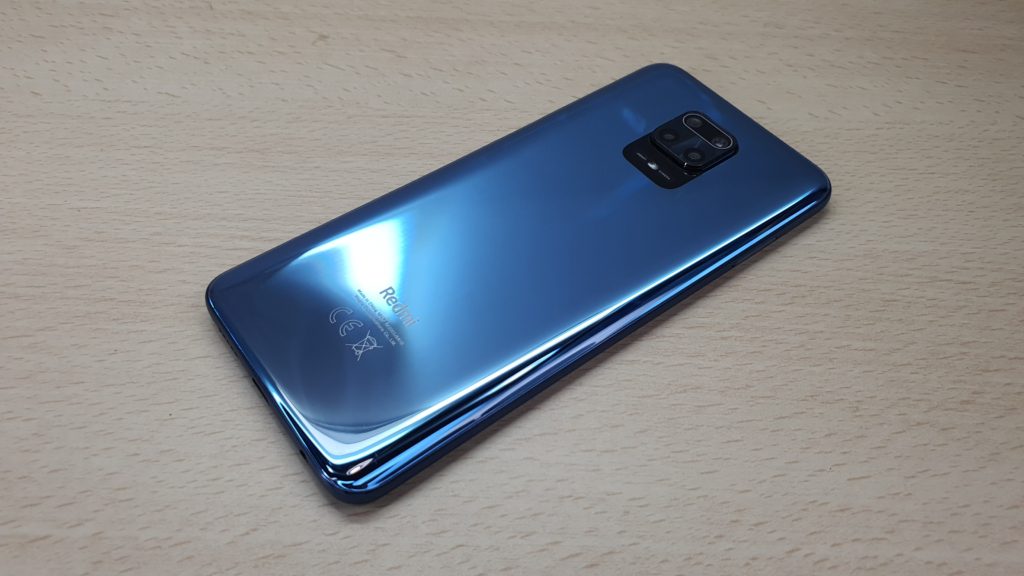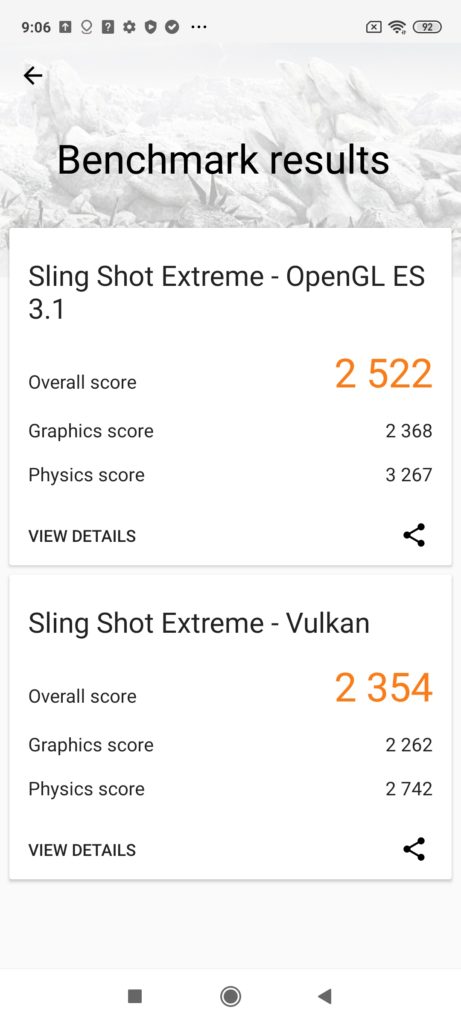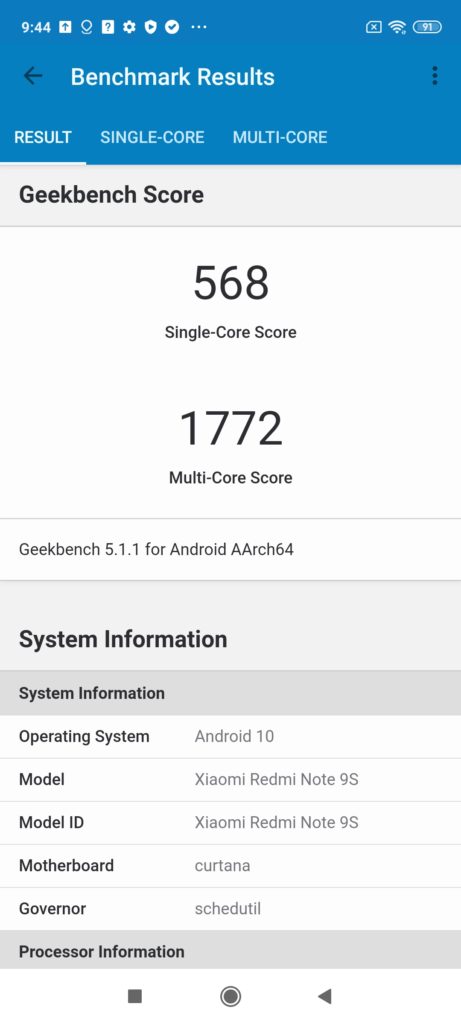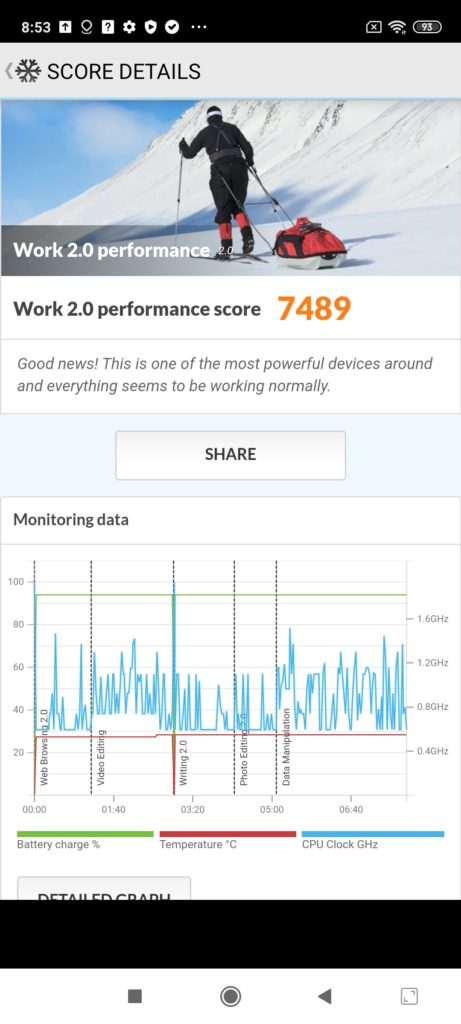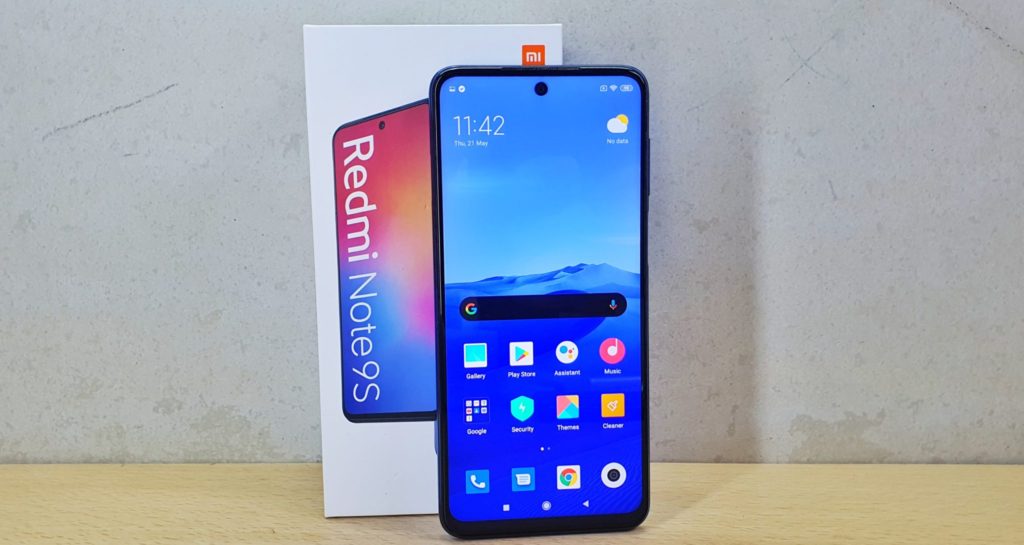
Redmi Note 9S review – Surfing On Cloud 9?
The Redmi Note 9S plays to Xiaomi’s strengths by offering as much value as possible at as low a price point as possible and it manages to achieve this for the most part while keeping to a familiar formula that prioritises affordability with a median of functionality and performance.
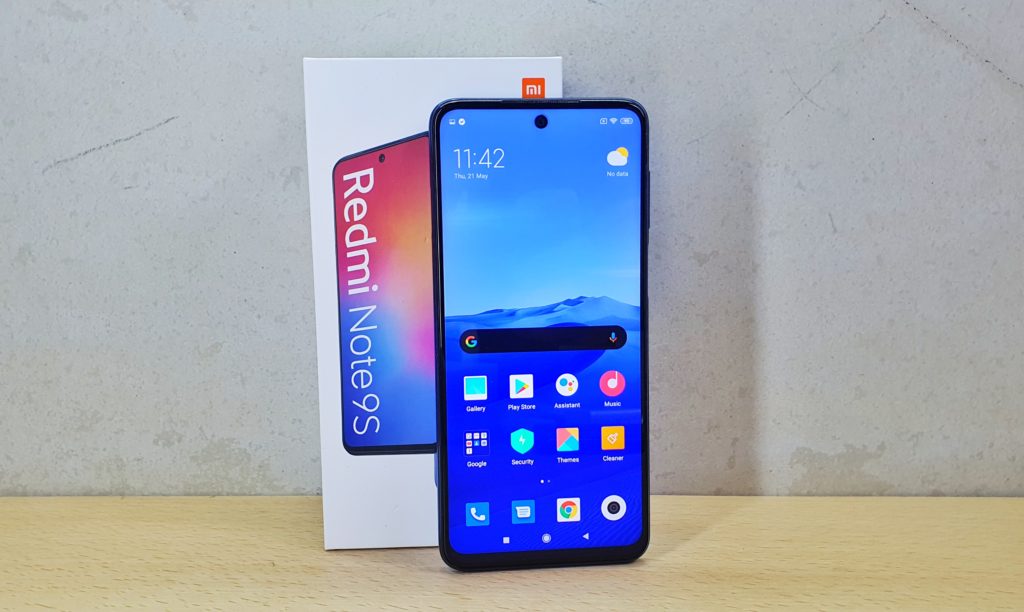
Redmi Note 9S – What’s in the Box
Table of Contents
The packaging comes with most of the expected accouterments that include a TPU casing, a 22.5W fast charger along with the usual accompanying USB cable. The usual pair of hard ear buds that are common additions in entry level phones is omitted here, presumably for cost savings.

They’ve also taken the step to apply a screen protector to the phone beforehand so it represents a fairly comprehensive selection of kit. Oddly enough, the phone maxes out at 18W fast charging support so the addition of a more powerful charger is a bit of overkill but is nonetheless a pleasant bonus.

Redmi Note 9S Build quality and design
The Redmi Note 9S has a set of hardware that frames it primarily as an affordable entry to midrange smartphone. Crammed into a shiny mirrored blue chassis hewn of polycarbonate is a 6.67-inch IPS LCD display with Full HD+ resolution, a standard 60Hz refresh rate and a punch hole in the upper middle quadrant for a 16-MP selfie camera. The top and side display bezels are pleasantly slim though the bottom still retains a rather prominent bezel.

In terms of aesthetics, the phone ticks off all the right boxes for contemporary smartphone design. There’s a 3.5mm audio jack on the base of the phone next to a USB Type-C port and a grille for the sole downward firing speaker.
On the left side is a triple card tray which lets you plonk in two nano SIM and one microSD cards at the same time while the right side has a volume rocker and a power button that doubles as a fingerprint reader.
Hopefully they retain this feature as a permanent one in future iterations of the series as in-display readers are unergonomic at best as you have to reposition your grip just to unlock the phone. The top retains one of the more popular features of the Redmi series – an IR blaster that lets you control a variety of other appliances.
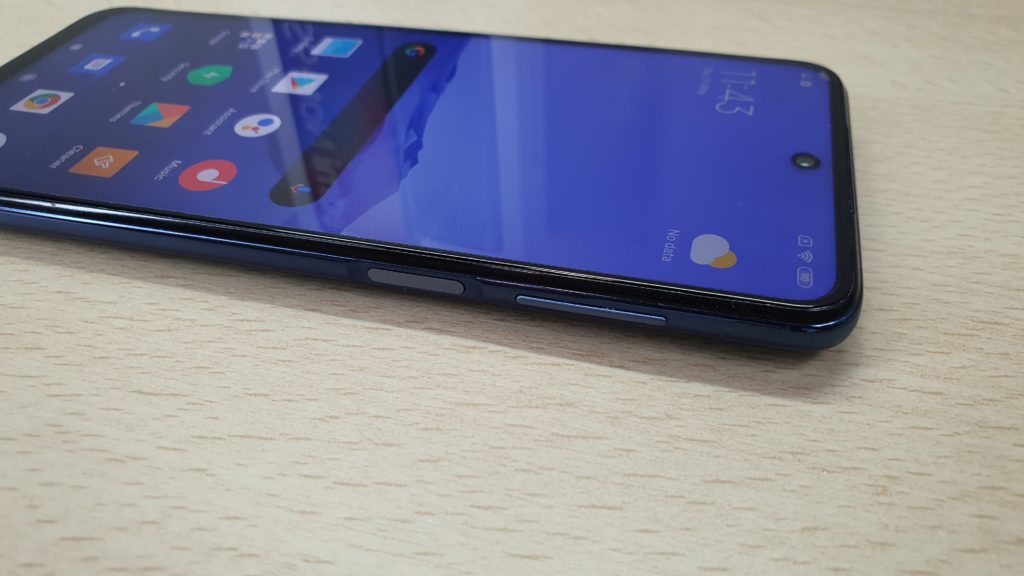
Like many of its contemporaries the phone looks great from afar with a striking reflective finish done up in what they call a shade of Aurora Blue but it collects fingerprints aplenty even with casual use which is especially apparent on the backplate.
The rear quad camera array is emplaced in a square-shaped bump in the upper rear centre that sticks out prominently, making it prone to scratches if you place it flat face down. Fortunately, the provided casing resolves this issue. Overall build quality is fair for its price range so you’re not being shortchanged here.
Redmi Note 9S Specifications and Performance
In terms of the hardware that the Redmi Note 9S packs, our test unit came with the following:
Specifications
Price RM799
Display 6.67-inch IPS LCD, 2,400 x 1080 pixels, 395ppi
Processor Snapdragon 720G
OS Android 10 w/ MIUI 11
Memory 4GB RAM/64GB+microSD card
Camera 48MP F/1.8 + 8-MP ultra wide angle camera + 5-MP macro camera + 2-MP depth sensor (rear) / 16-MP (front)
Battery 5,020mAh w/ 18W fast charging
Size/Weight 165.8x 76.7 x8.8 mm / 209g
Our test unit is the base model but a higher end variant exists packing 6GB RAM and 128GB of storage for RM899 which is just RM100 more. Under the hood, the Redmi Note 9S has a Qualcomm Snapdragon 720G octacore processor paired with an Adreno 618 GPU, 4GB RAM and 64GB of expandable storage running Android 10 overlaid with their own MIUI 11 user interface. The hardware on offer here has sufficient performance to tackle most day to day tasks.

The Snapdragon 720G octacore processor was introduced earlier this year and is built on an 8nm process, combining 6 Kryo 465 Silver 1.8GHz cores with two Kryo 465 Gold 2.3GHz cores to handle the heavy lifting with the phone capped at 4G LTE connectivity.
In terms of benchmarks, the phone got the following:
3DMark Sling Shot Extreme – OpenGL ES 3.1 2,522
3DMark Sling Shot Extreme – Vulkan 2,354
GeekBench 5.0 Single-core score 568 Multi-core score 1,772
PC Mark Work 2.0 7,489
GFX Bench 674.2 frames
In use, the Redmi Note 9S proved to be an adequate performer that was sufficiently nimble enough to swap through a dozen or so tabs on Chrome, play Call of Duty Mobile on high settings and otherwise run PUBG Mobile, Clash Royale and a bunch of other productivity apps without issue though games needed a few extra seconds to load up. While the existing RAM and storage are on the meager side, the relatively new Snapdragon 720G processor compensates somewhat to ensure tasks are handled in a competent fashion.
The bundled MIUI user interface has seen improvements from the last time we tested it with much less bloatware than before and the use of Chrome as the default browser. Getting about is a smoother affair and it also supports a Dark mode with a slew of selectable themes that you can download and swap to; many are free but the better looking ones require payment.

One interesting improvement to note this time around is that there’s also a lot less adware popping up that were primarily centered around their in-house stock apps with the few instances of it appearing easily dismissed.

The provided LCD display is serviceable with sufficient brightness and clarity for most scenarios but the provided single bottom-firing speaker is a downer with reasonably loud if unremarkable performance. Volume is sufficient for gaming and the odd video or two but sound staging remains rather poor and you’ll need to use your own earbuds as the phone lacks any free pair of headphones to go with it.
If you need to tweak the display’s colour rendition, XIaomi does offer a comprehensive means to tweak it towards the warmer or cooler part of the spectrum to suit personal tastes in the settings.
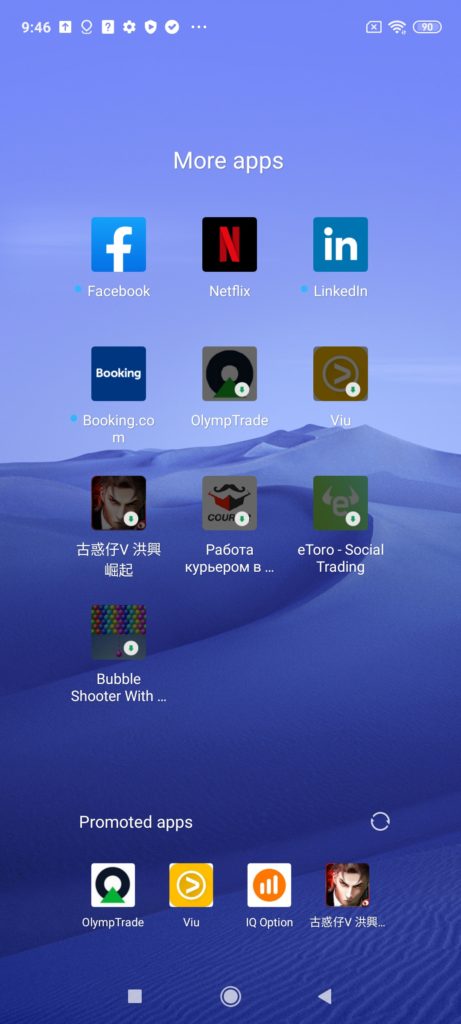
The phone still has quite a few preinstalled apps and several more that it suggests to install.
On that note, the phone does have Widevine L1 certification so it’s able to support Netflix playback at 1080P resolution which does allow it some utility for binge watching dramas.
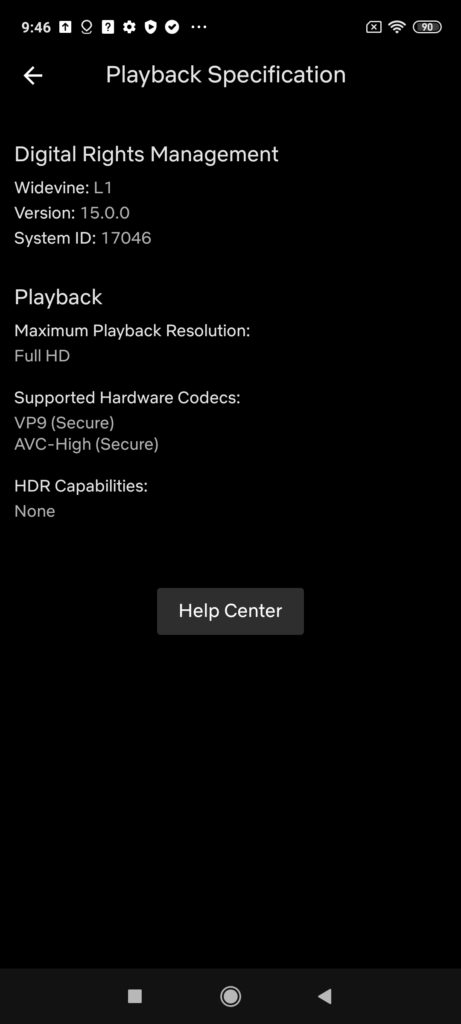
The bundled 5,020mAh battery is the main highlight here, offering outstanding endurance in the field with comfortable endurance that lasts just short of two days with average use. The addition of a 22.5W charger while the phone charges at a maximum of 18W is a pleasant bonus. From a dry battery, it’s able to get a full charge in under 2 hours which is par for phones in its price range.
Redmi Note 9S Cameras
The rear quad camera array on the Redmi Note 9S is fairly standard with a 48-MP F/1.8 primary camera, an 8-MP F/2.2 ultra-wide angle camera, a 5-MP F/2.4 camera for macros and a 2-MP depth sensor. This allows it to capture 12-MP snaps, 4K@30fps video and via a specific mode, full-sized 48-MP stills.

One thing to note here is that the phone lacks optical image stabilisation and optical zoom lenses; instead it relies purely on digital zoom and electronic stabilisation which produces less stellar but serviceable outcomes if you have a steady hand.
The camera interface follows most of the norms of camera UI design with a slider to control zoom, the various selectable modes on the right and settings in a bar on the left.
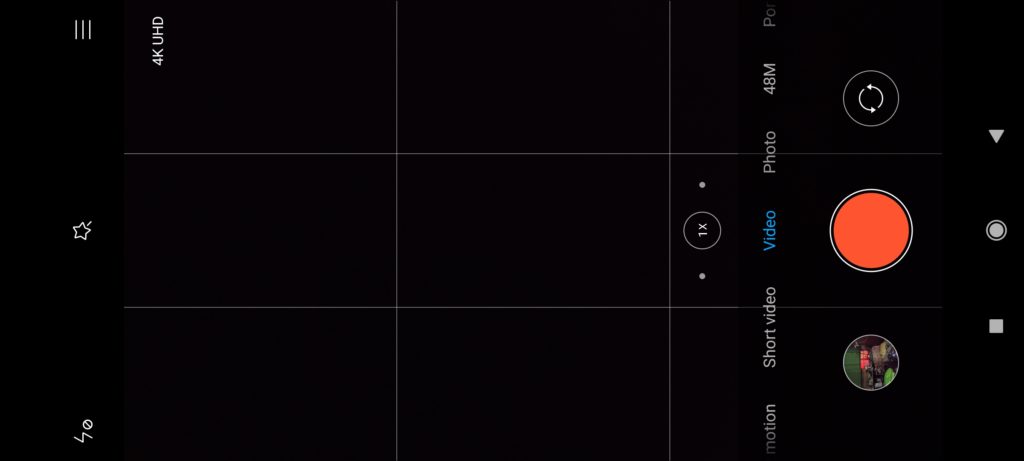
For videos, you’re able to pick from the use of the wide angle camera, the primary 48-MP camera or to zoom in closer at 2x digital zoom via the slider. There is also a Pro mode and a Night mode as well but the use of the latter disables the wide angle and macro cameras and only works with the primary camera only.
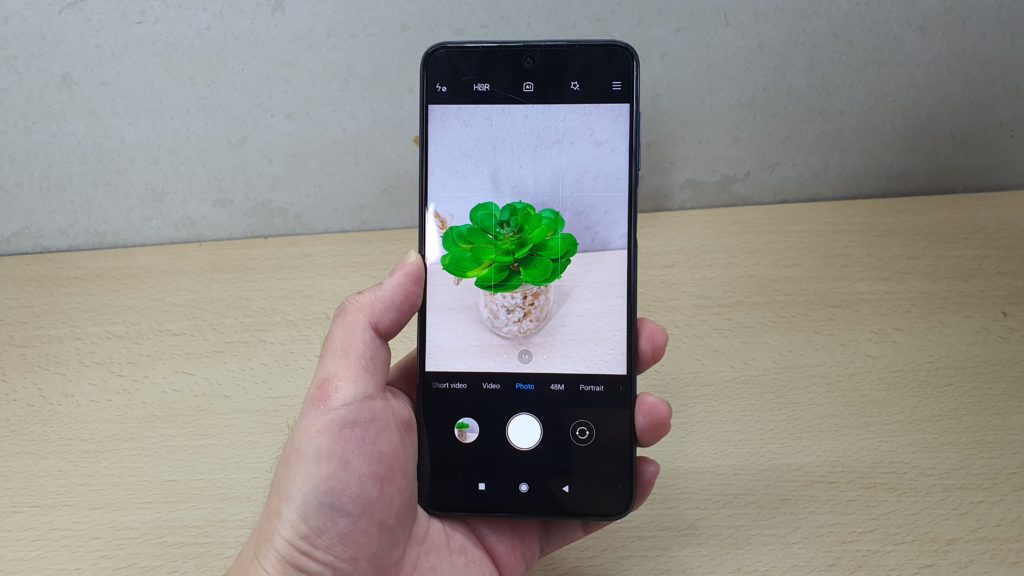
These camera menu are mirrored for stills with a 0.6x wide angle mode, the main camera and 2x zoom. There’s no optical zoom nor is there optical image stabilisation here so what you get is primarily cropping the image from the main sensor for zoomed in shots.


The rear quad camera produces fairly good shots under daylight conditions for the wide angle, primary and macro camera on auto mode with HDR set to auto.

Macro shots show good detail in close-ups and results from the primary camera have pleasing hues that veer on the vibrant side of the colour spectrum which aren’t exactly colour accurate but are pleasing for social media use.
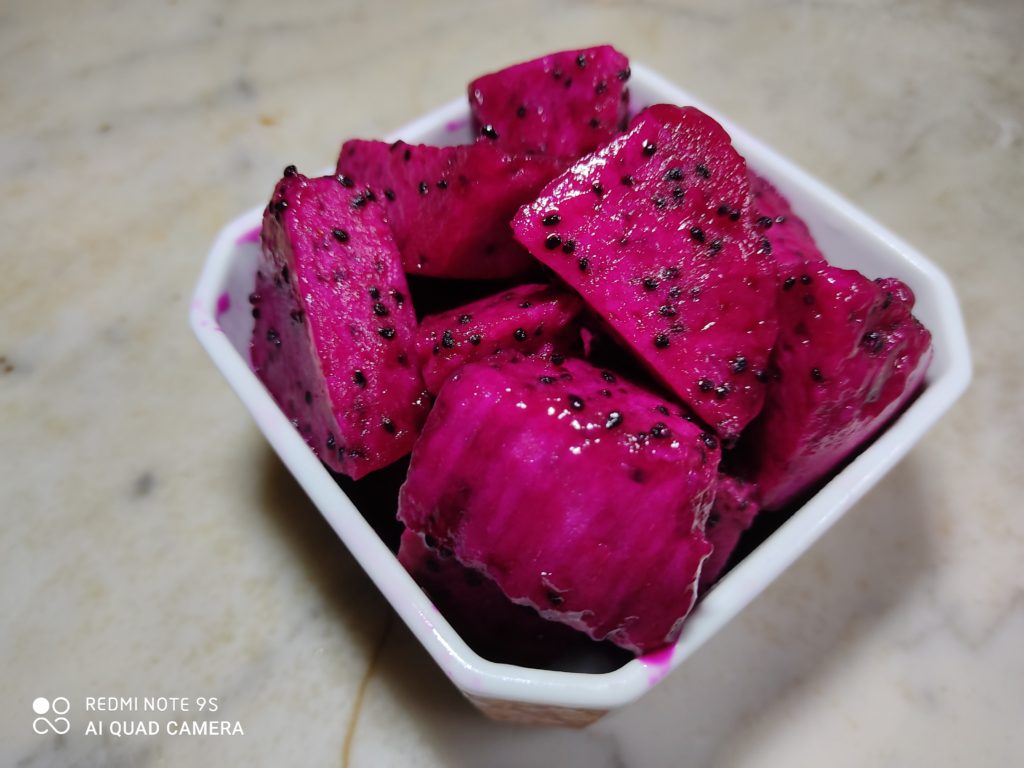
There’s a minor bit of aspheric distortion on wide angle shots but they’re mostly apparent in urbanscapes with distinct horizons. Full sized 48-MP shots look good but have aggressive sharpening which is apparent on closer scrutiny.
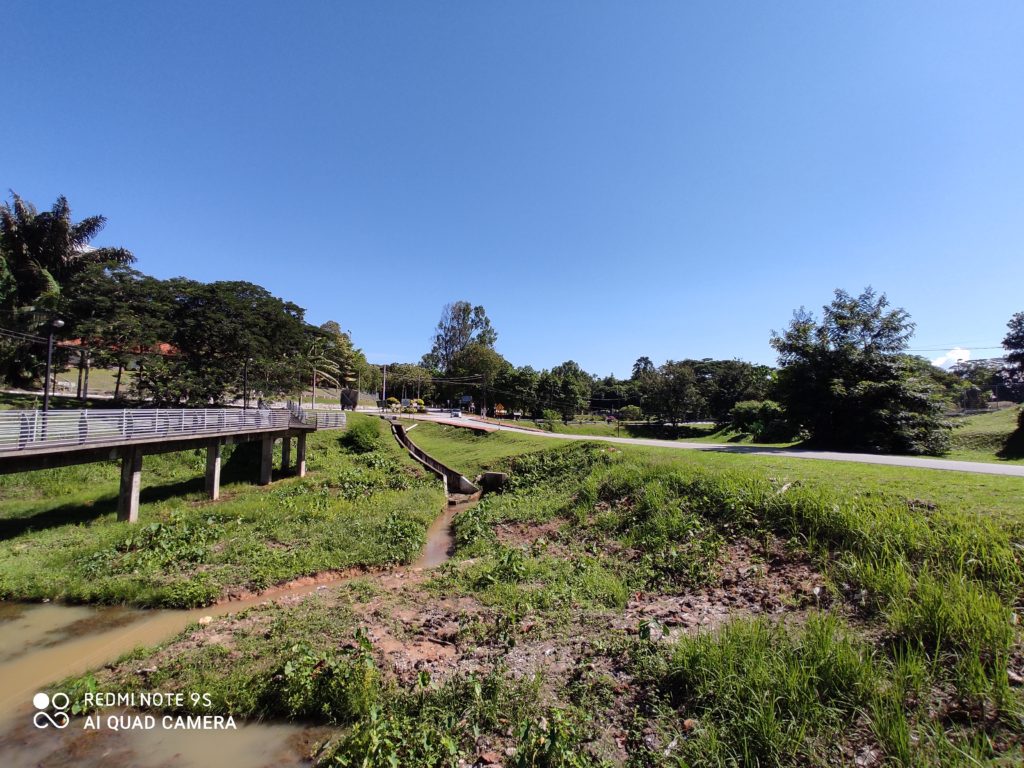
Ultrawide angle camera

Primary camera
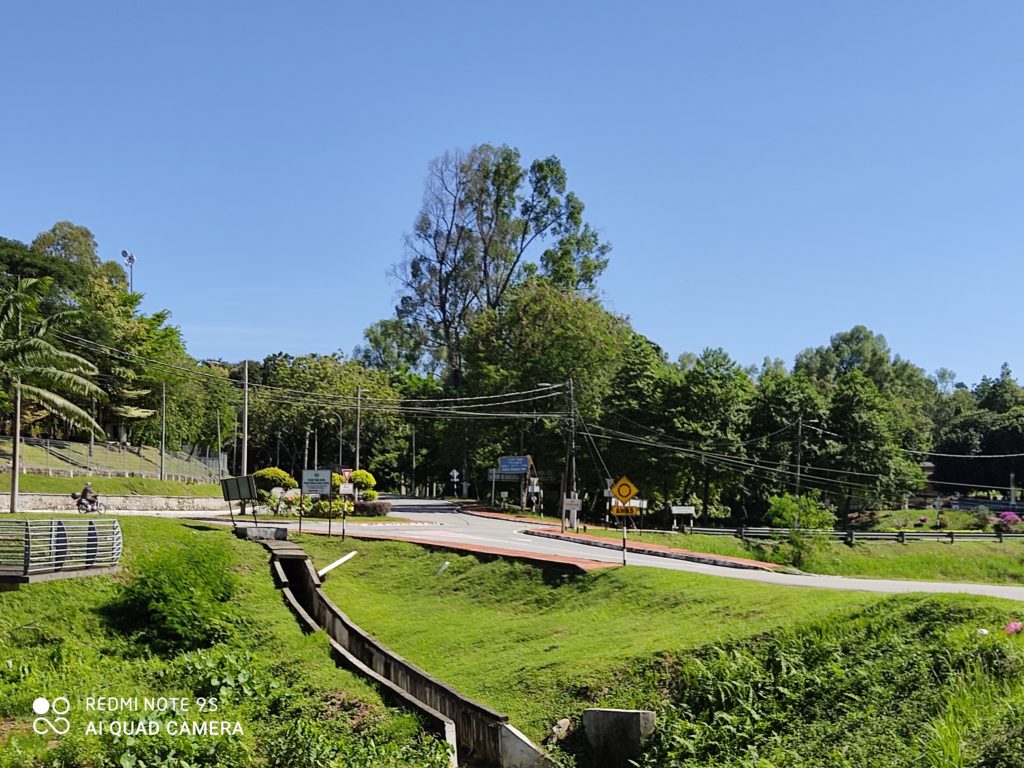
10x digital zoom
Results tend to go downhill in dim light with noticeable noise and softness in Auto mode across all three cameras. The provided Night mode only works on the primary camera with slightly better colour rendition but aught else. The front facing selfie camera does offer good skin tones and works best under brightly lit conditions.
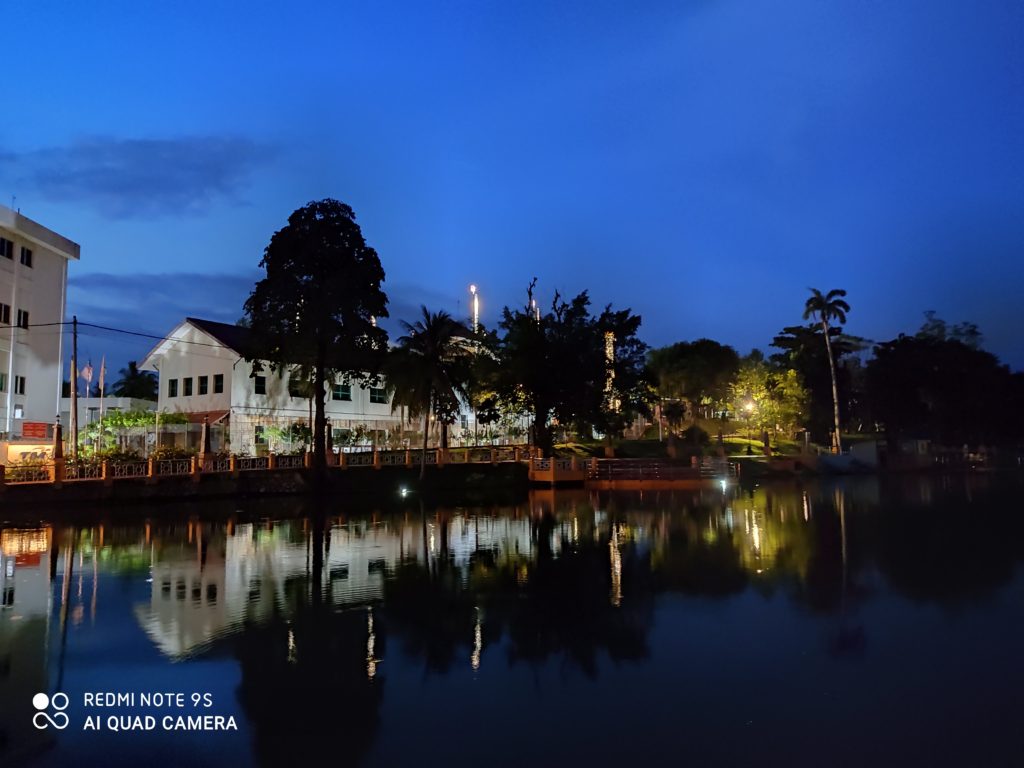
Night mode on with primary camera
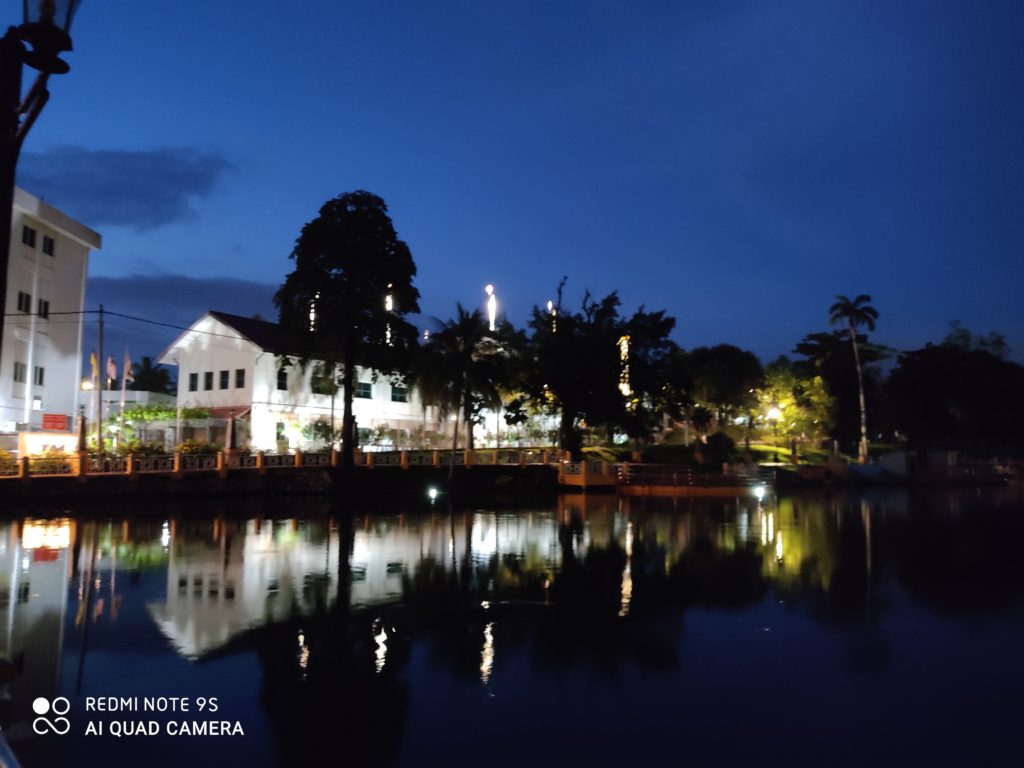
Primary camera on Auto with Night mode off. Note the harsher lighting on the building, drabber hues and darker skies.
Front videos are capped at 1080P while the rear camera array can capture up to 4K video though electronic image stabilisation is only available when you dial video down to 1080P@30fps. You’ll need a steady hand or a tripod to capture decent 4K video or alternatively resort to the phone’s EIS. Overall results are serviceable for what you pay it isn’t anything to write home about

Night mode on
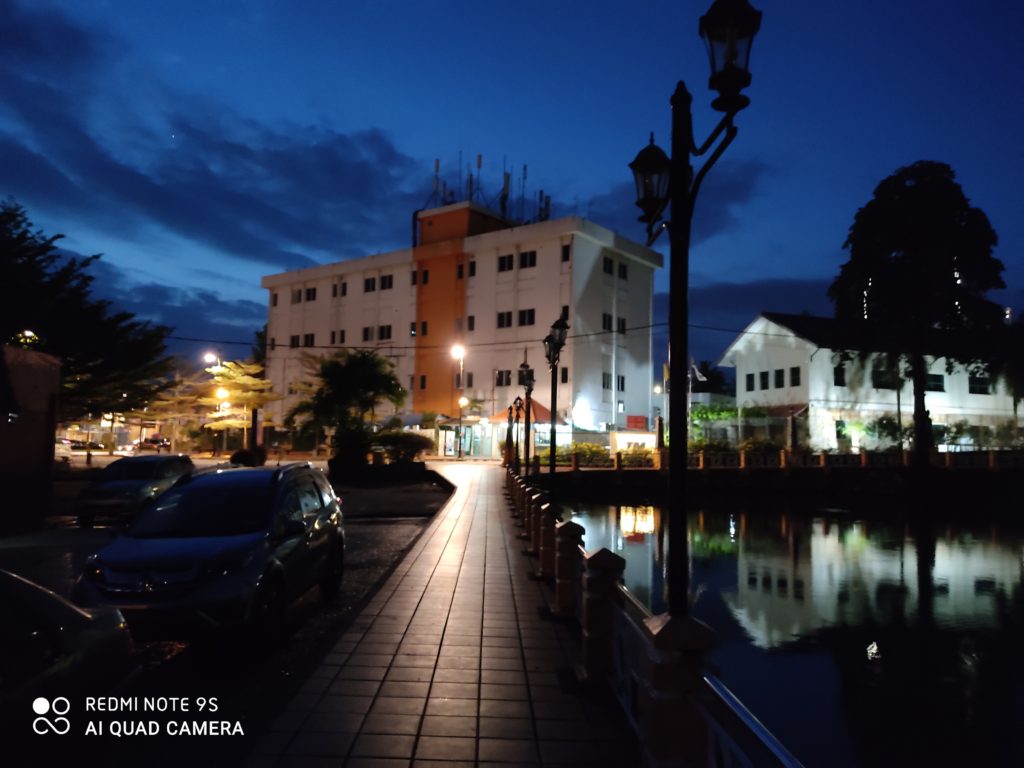
Night mode off and Auto mode on
Redmi Note 9S Price and Verdict
The base unit of the Redmi Note 9S is appealing on account of its large display, relatively new processor and huge battery but the modest 4GB RAM and 64GB storage along with its middling cameras predispose it as a choice primarily for those on a budget. If you have the cash to spare, you might as well invest the extra RM100 and get the better specced 6GB RAM model.
What we liked Good battery life, side-mounted fingerprint reader, decent performance, good battery life
What we didn’t Average cameras, still full of bloatware, poor mono speaker
We Say A large display and battery along with a new processor vie with modest camera performance and middling storage. If you’re on a tight budget, it’s worth a look but if you can spare the extra RM100, the higher specced version is a more worthy long-term investment.
Review unit courtesy of Xiaomi Malaysia.
